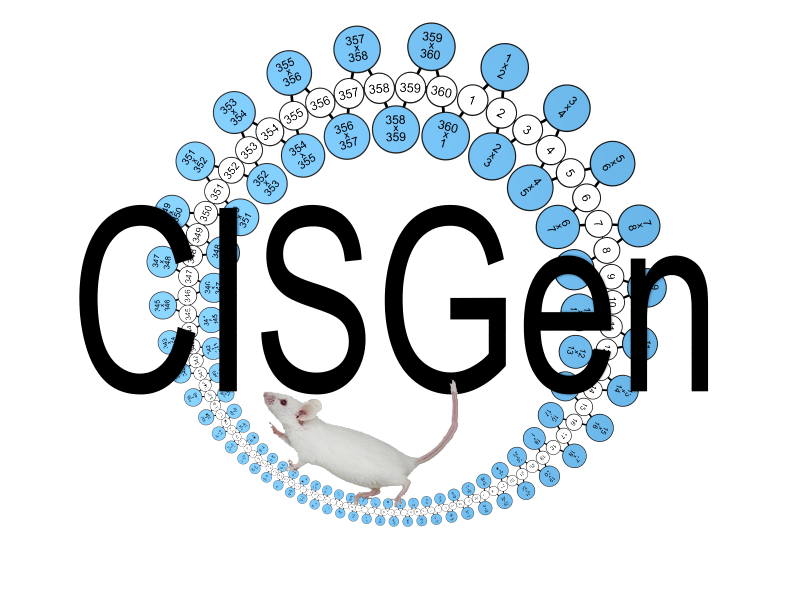Comparative genome browser for 198 mice
Description
The Mouse Phylogeny Viewer (MPV) is a custom genome browser designed to provide the user with reliable and detailed answers to questions on the haplotype diversity and phylogenetic origin of the genetic variation underlying any genomic region of most laboratory strains (both classical and wild-derived). A detailed explanation of the methods used and meaning of the data has been reported in "Subspecific origin and haplotype diversity in the laboratory mouse" (Yang et al. 2011).
MPV allows the user to select a region of the genome and a set of laboratory strains and/or wild caught mice (i.e, samples). The region is selected by specifying the start (e.g. 31200000 or 31200K or 31.2M), and end of the interval and the chromosome (i.e, autosome number and X chromosome). Samples can be selected by name or by entire set.
Data sets
SNPs on the Mouse Diversity Array
This display provides local density of SNPs on the Mouse Diversity Array. The browser provides a histogram in which the height of the bar is proportional to the local SNP density.Subspecific Origin
In windows representing large genomic regions, this section depicts each sample as a solid line.- Blue bars represent M. m. domesticus haplotypes
- Red lines represent M. m. musculus haplotypes
- Green lines represent M. m. castaneus haplotypes
- White lines represent regions of haplotypes of undetermined origin
- Purple lines represent heterozygous regions with M. m. domesticus and M. m. musculus haplotypes
- Cyan lines represent heterozygous regions with M. m. domesticus and M. m. castaneus haplotypes
- Brown lines represent heterozygous regions with M. m. musculus and M. m. castaneus haplotypes
Heterozygosity Regions
Each sample is depicted as a line. White represents homozygous regions and black bars represent heterozygous regions. The height of the vertical bars represents the local level of heterozygosity.For classical inbred strains, MPV provides access to four additional types of analysis.
Compatibility Intervals
These are overlapping intervals that show no evidence of historical recombination. The browser provides a histogram representing the local density of intervals. Under this track there are two additional tracks in which each interval is shown as a blue bar. The user needs to zoom in to regions with a high density of intervals to be able to see individual intervals. For each such compatible interval there is a phylogenetic tree, in which each node corresponds to a haplotype and each edge to SNPs with the same strain distribution pattern (see below).IBD
The browser identifies regions of identity by descent among all selected classical strains for a given region. IBD regions are shown as pink bars.Haplotype Coloring
This section depicts each sample as a colored line using eight pastel colors. The order of the samples can be changed at will by the user. Samples can be recolored based on the strain order in the display.Phylogeny Trees
Trees are available for each compatible interval by clicking on that interval. The browser provides the distance tree, the distance matrix and the strains belonging to each haplotype. Selected strains are shown in bold. Colors represent subspecific origin. For each haplotype we provide a score and the number of SNP used to support it. Asterisks, denote haplotypes for which IBD among all samples is not strongly supported (high score and/or low number of SNPs). The user can take into consideration the trees in neighboring intervals to weight the evidence supporting a given haplotype. Phylogenetic trees including wild-derived PWK, WSB, and CAST can be seen in the CCV (csbio.unc.edu/ccv)Further details are explained in our paper (see reference).
Viewer
Strain and subset selection
Reference
Jeremy R. Wang, Fernando Pardo-Manuel de Villena, and Leonard McMillan. Comparative analysis and visualization of multiple collinear genomes. BMC Bioinformatics, 2012.
